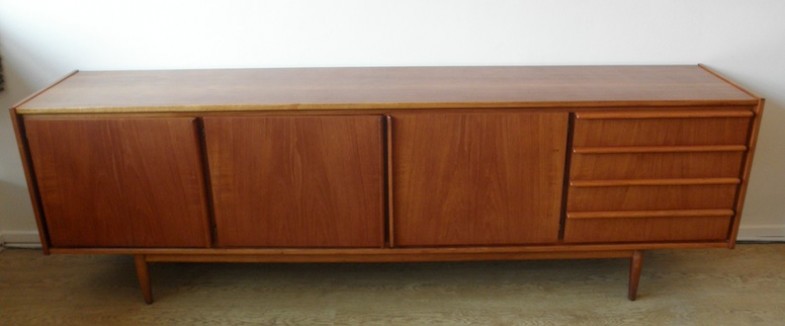One of the most common problems we face when trying to repair vintage furniture is badly glued joints. When the original glue (which in most cases was an animal glue) gives way the dowels or tenons come loose. This means that the legs or similar move away from the corresponding rail. When you need to repair this the number one rule is to do it properly once. This should give you a few tricks on fixing these joints with basic tools.
1) You need to open up the joint, the best way is to tap it open. Use a hammer with a piece of soft wood between it and the leg so it doesn’t dent.
2) Once open any old glue should be removed. An old drill bit the same size as the dowel holes turned by hand should break away the old glue. Scraping the dowels with a knife or a quick rub with course sandpaper should do the trick. The same for tenons (like square blocks that go into a slot- sometimes have rounded ends). If any glue from previous repairs is evident remove it. Try the joint dry and make sure it closes up properly. Broken dowels always need to be removed and replaced as close to the old holes as possible.
3) Next fill the joint with Aquadhere, PVA or similar wood glue (not too much that it will spill out everywhere- just enough for the dowel to have a even cover and the inside walls of the hole).
4) Immediately clamp the joint with a furniture clamp again using blocks of wood to stop bruising the timber. If you don’t have a proper clamp it is possible to use rope tied up and twice looped around the object, then use a piece of wood to twist up the 2 pieces of rope putting them under tension. Don’t over tighten -just enough to close the gap up. The piece should be left under tension on it’s feet on flat ground. Be very careful when you use this method because it can let go and injure you if overtightened and it unravels.
5) Clean off all excess glue from the surfaces with a damp rag then leave the furniture to dry overnight.
6) Take off clamps, clean up any extra glue smears with a damp cloth again. The piece can then be oiled with teak oil or another furniture finish restoring product like beeswax polish or even Mr.Sheen/ Marveer etc.
As with all restoration projects eye, ear and skin protection must be worn. We take no responsibility for any injuries you may sustain using these methods and they are intended as a guide to show how we repair furniture as professionals. Please always read the manufacturers labels and use as intended.